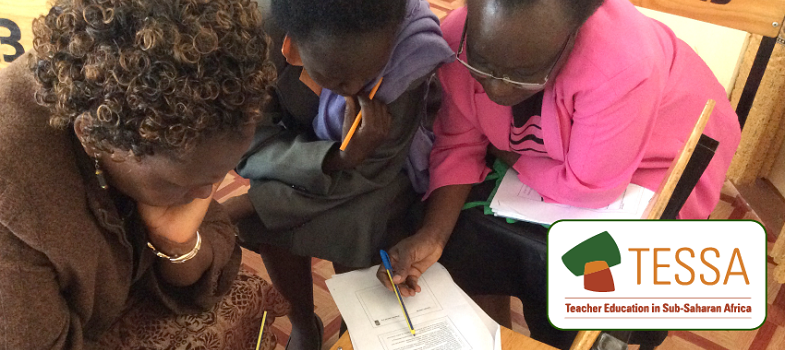1. Working in groups to discuss families
When investigating the family, it is useful to first explore pupils’ understanding of what a family is and show them the diversity among families. Celebrating such diversity helps pupils feel better about themselves when they realise how different families can be. Case Study 1 and Activity 1 explore different ways to do this.
In the case study, the teacher encourages his pupils to work in small groups (see Key Resource: Using group work in your classroom [Tip: hold Ctrl and click a link to open it in a new tab. (Hide tip)] ) and to remember the rules that they have agreed for small-group discussions.
Case Study 1: Using group work to explore my own family
Mr Nguzo is a social studies teacher at Muhimu Primary School in Tanzania. He wants his pupils in Standard 3 to learn about families and the roles of different family members.
He organises groups of not more than six; he puts pupils together who do not usually work with each other.
In the groups, pupils take it in turns to answer the following questions, which he has written on the board.
- What is your name?
- Who are your father and mother? What are their names?
- Who are your grandfathers and grandmothers? What are their names?
- How many sisters and brothers do you have? What are their names? Are they older or younger than you?
- How many cousins do you have? What are their names?
During the discussion, Mr Nguzo goes to each group to check that all the pupils are being given a chance to contribute. After 10 to 15 minutes, he asks the groups to share with the whole class what they have found out about different families: What were the similarities between the families? What were the differences? (For younger or less confident pupils, he would have to ask more structured questions, e.g. ‘Who had the most brothers?’)
Then he asks the groups to consider this question:
- What makes someone your sister, your brother, your aunt, etc.?
After 10 minutes, one member of each group presents their answers to question 6 to the class. Mr Nguzo prepares a large, basic kinship chart to help focus the discussion (see Resource 1: Kinship chart).
Mr Nguzo and the pupils note that although there are words in their language that express cousin, uncle and aunt, these relations are normally referred to as brother or sister; grandfather, father are usually simply father; grandmother, mother are similarly simply mother. There is a distinction between the uncles and aunts from the mother’s side and those from the father’s side. Mr Nguzo realises that teaching pupils about the relationships within families can be confusing for younger pupils.
Activity 1: Who am I?
- Before the lesson, prepare a kinship chart as a handout (see Resource 1).
- Ask the pupils to work in groups of three or four. One pupil volunteers to list all the people they know in their family and fill in the details on a kinship chart. (You may wish to select which pupil is chosen.)
- Pupils might want to draw pictures of their relatives on the chart.
- Share these charts with the class.
- Discuss the variation in families and emphasise how good this variety is.
- At the end of the lesson, display the kinship charts on the wall of the classroom.
Section 1 : Investigating family histories



